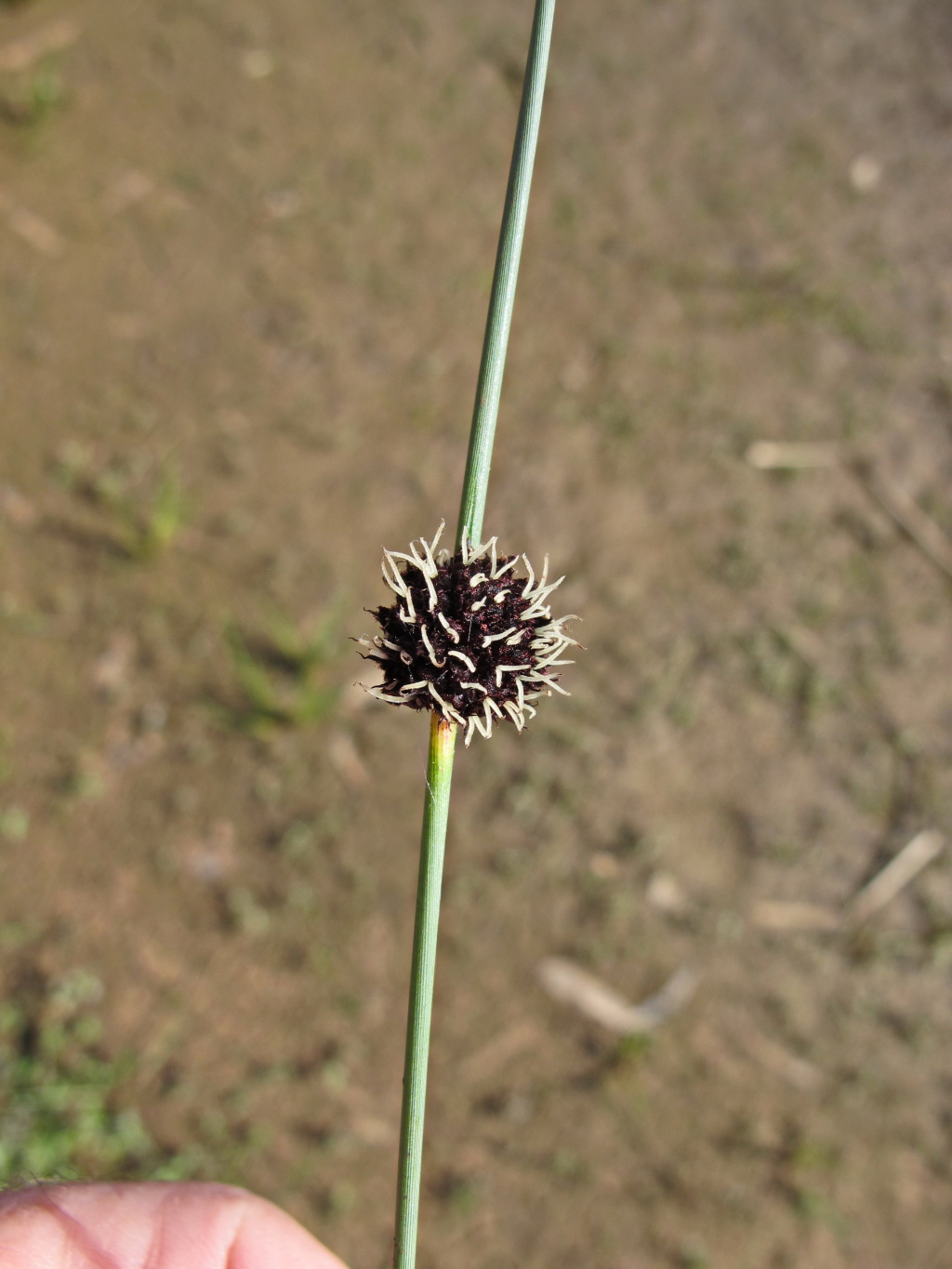Chorizandra enodis
Nees Black Bristle-rushPerennial with slender but tough rhizome. Culms 20–55 cm high, 1.0–1.5 mm diam., pluritubular, transverse septa rarely obvious externally, grey-green, longitudinally striate but not warty. Inner leaf-blades shorter than or exceeding culms, more slender than to about same diameter as culms, pluritubular; sheaths tight, pale brown, often purplish above, to 7 cm long. Inflorescence globose, 7–15 mm diam., with numerous pseudospikelets; core cylindric to globose. Involucral bract to 20 cm long, pluritubular; base with hyaline margin, scarcely enlarged, not sheathing inflorescence. Pseudospikelets with 13–20 glumes, c. 10–17 stamens; glumes spathulate to ligulate, not keeled, dark red-brown and usually white-ciliate towards apex, red-ciliate on margin, 3–3.5 mm long; apex 3-fid with mucro to 0.8 mm long or irregularly toothed and broad-acute to obtuse. Nut with 8–9 longitudinal ridges, pitted between ridges, minutely papillose as seen with a hand-lens, very dark red-brown to dark grey-brown, 2.5–3.0 mm long, 1.6–1.7 mm diam. Flowers spring–summer.
LoM, MuM, Wim, GleP, VVP, GipP, OtP, WaP, Gold, CVU, GGr, DunT. Also coastal Qld, NSW. In damp situations, both natural and man-made (such as roadside drains) in western Victoria, extending farther north (to the Big Desert) than other members of the genus.
Wilson, K.L. (1994). Cyperaceae. In: Walsh, N.G.; Entwisle, T.J., Flora of Victoria Vol. 2, Ferns and Allied Plants, Conifers and Monocotyledons, pp. 238–356. Inkata Press, Melbourne.
 Spinning
Spinning

